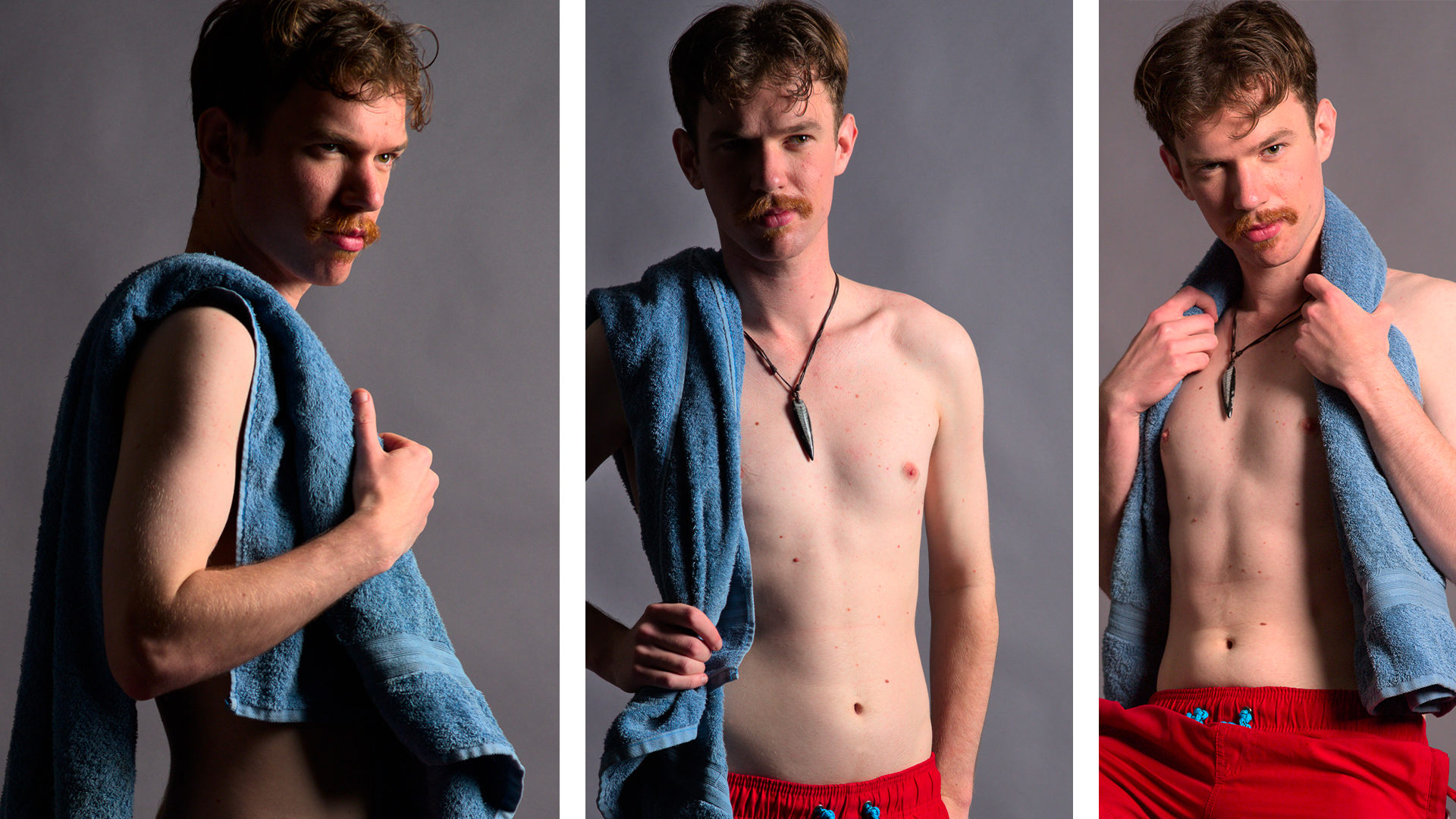Photos: Bailey Burgin
Last semester for my second year photography subject, I explored how we tell nude photography and pornography apart. For my investigation, I reviewed past papers on prominent figures in nude photography, interviewed OnlyFans creators and even became an adult model to better understand the topic. Initially I thought the difference was in the level of exploitation and ‘profit motive’ involved in the production process. However, through my investigation I discovered it is in fact media structures and pre-held biases surrounding a work that determine the distinction.
For this series, I took on the role of an adult creator. My aim was to encourage viewers to interrogate why they hold the perceptions they do regarding adult content. Is it because of the content itself or the surrounding cultural and economic framework? In this artist statement, I summarise key points from my research and explain how it informed my series.

The foundation of my research was the essay Representation, Distribution, and Formation of Sexuality in the Photography of Araki Nobuyoshi, by Hagiwara Hiroko. In it, she outlines that media and art (especially in our modern economic framework) are inherently contrived. They are designed to appeal to and exploit audience biases (Hiroko, 2010). These biases and perceptions of art are further shaped and guided by the systems of distribution that surround it.
Hiroko outlines this framework using the work of Nobuyoshi Araki. Araki has been an influential figure in the world of bondage photography. He helped define and popularise the genre and his art was considered to be feminist. It was a way for Japanese women to reclaim their sexuality; rebelling against strict social structures while still observing cultural values of discipline and mastery. He also cultivated a perception that his art was personal and highly intimate.
Hiroko argues that his art relies heavily upon orientalist and racist understandings of Japanese culture, held by western critics. Western art critics who celebrated his art as feminist relied on stereotypes of Japan, more than an actual understanding of the country at the time (Hiroko, 2010). However, this was encouraged by Araki and his publishers as it gave his hypersexual content ‘artistic legitimacy’ (Hiroko, 2010).
Hiroko also argues that the highly intimate and personal content of Araki’s photography was a construction. Given Araki’s widespread publication, it is naive to accept his work as truly a reflection of his personal life (Hiroko, 2010). Araki’s success “could not have been achieved without well-organised, market-oriented corporate efforts” (Hiroko, 2010). He is commissioned by publishers to bring them profit. “These circumstances condition what he photographs and how he photographs it” (Hiroko, 2010).
Hiroko’s analysis of “how our perception of art and media is curated” can be applied to other artists. For example: Helmut Newton. A prominent nude photographer for Vogue, he is regarded as revolutionary in shaping how women and their sexuality is perceived in Western media. Similar to Araki, his art is regarded as allowing women to reclaim their sexual agency. Newton became popular in the 60s and 70s during a renewed period of feminism and women’s sexual liberation. While I don’t debate his work was aimed at promoting a feminist perception, it is reasonable to say a commercial desire to appeal to the growing movement played a role in shaping his photography and how Vouge marketed itself.

A major issue of Hiroko’s essay, however, is that it was written entirely within the framework of traditional media wherein content distribution was controlled by a limited number of people, who promote selected individuals to represent specific demographics (Marshall, 2013). However, thanks to the rise of online media, average people have a greater ability to produce, share, interact with and shape the media they consume (Marshall, 2013). I expanded upon Hiroko’s ideas by investigating modern media production and distribution structures as they pertain to adult content.
In modern media, individual content creators take on the role of curator. They have direct influence over how their content is constructed and distributed (Marshall, 2013). However the process remains mediated. Producers seeking financial growth must be mindful of ‘fan’ desires and expectations. They must learn to appeal to followers and shape their content accordingly. Many OnlyFans creators reported themselves frequently performing emotionally for clients as well as sexually (Easterbrook-Smith 2022). Producers must also consider their platforms of distribution. This is because traditional media structures persist in the form of monopolised social media entities. While not directly controlling media production like a TV or radio station, they still shape it through the use of terms of service and financial incentive. This has a profound effect on how creators produce their content.
Adult creators must also navigate societal perceptions regarding their labour. Sex work is often seen as devient and less valid than other forms of work (Easterbrook-Smith 2022). This societal perception leads to them frequently having less legal protection or recognition.
They also have to worry about the fact that terms of service are rarely enforced equally, with marginalised producers often receiving stricter enforcement (Easterbrook-Smith 2022). These factors contribute to the instability of online sex work as source of income. To accommodate for this, creators may rely on third party sponsorships to supplement their income, further influencing how their content is produced.
In conclusion, what is recognised as art is often arbitrary. It can and does get influenced by corporate manipulation. However, for independent adult creators it’s an uphill battle. They must navigate fan desires and a society that views their work as illegitimate. These conditions necessitate that they engage in deliberate curation and construction of their content to achieve specific audience responses.
Bibliography
Hiroko, H., (2010). Representation, Distribution, and Formation of Sexuality in the Photography of Araki Nobuyoshi. positions: asia critique, 18(1), pp.231-251.
Marshall, P., (2013). Persona studies: Mapping the proliferation of the public self. Journalism, 15 (2), pp.153-170.
Easterbrook-Smith, G. (2022) “Onlyfans as gig-economy work: A nexus of precarity and stigma,” Porn Studies, pp. 1–16. Available at: https://doi.org/10.1080/23268743.2022.2096682.

